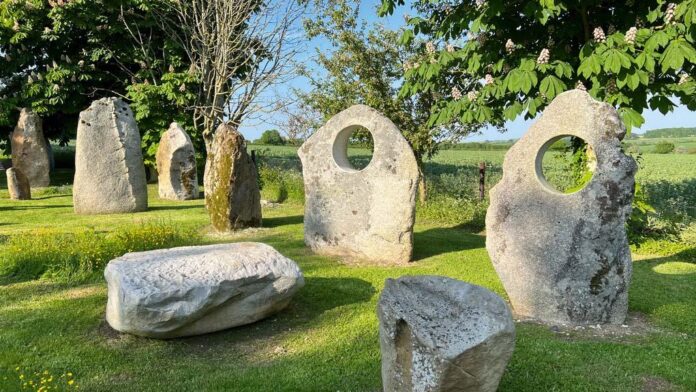In a hilltop field by a Wensleydale farmhouse, nine stout brown sandstone boulders, each weighing several tonnes, stand in a socially distanced circle. Their crude, irregular shapes and lichen-furred edges blur easily into their rural surroundings: coarse turf, a rough hedgerow, dishevelled treetops sprouting from the valley beyond. It is almost as if the stones had grown organically from the Yorkshire landscape.
Yet that thought no sooner crosses your mind than you realise that it cannot possibly be true. The arrangement is too deliberate: the even spacing, the shared verticality, the balance of large and small. This is a circle alive with conscious intent. It would hardly seem strange if the stones began to dance.
So you think instead about what prehistoric tribe might have caused them to stand like this, and why they did so. Or you would, if you didn’t know that the circle had been here for less than 15 years.
For Edith Ropner, the 93-year-old widow who lives in the farmhouse, the stone circle serves a simple but profound purpose: it is her daily reminder of her only daughter, Carey, who died 27 years ago. Edith derives great comfort from its presence. But the standing stones also embody a longer story, whose key protagonist is the youngest of Edith’s four sons.
Dominic Ropner, who grew up near where Carey’s memorial now stands, lives with his wife and three children in Kent but works for much of the time in Hampshire, which is where we meet. He is a tanned, fit man in his mid-fifties, casual in dress and confident in manner. He hardly needs to explain that he spends much of his working life outdoors.


